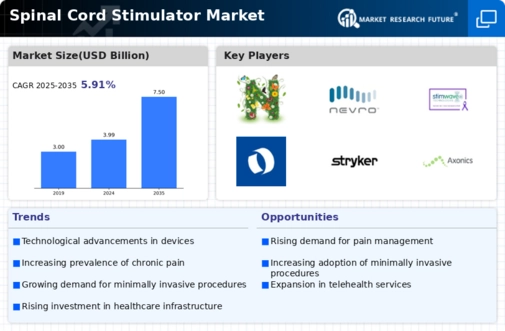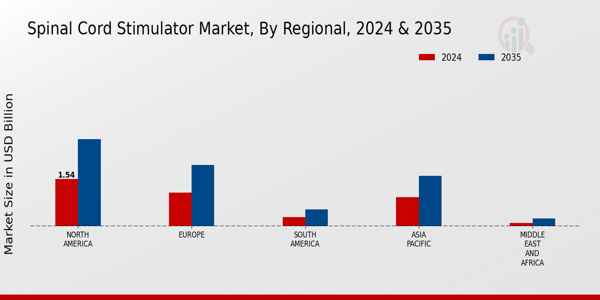Market Trends
Key Emerging Trends in the Spinal Cord Stimulator Market
The market for spinal cord stimulators (SCS) is going through various innovating turns and trends supported by the development of neuromodulation technologies, epidemiology of chronic pains, and the need for minimally invasive pain relief options. This advanced technique represents one of the significant developments in the field of spinal cord stimulation. In the case of HF-SCS, the electrical pulses are being delivered at a frequency that is much higher than traditional SCS levels. High frequency SCS serves as a powerful and painless method for patients that provide comfort and paresthesia free experience. This trend demonstrates that there is a tendency to increase effectiveness of the techniques of neuromodulation in order to improve the efficiency of the patients through establishment of better endurance.
SCS market has faced expansion in scope of the interventions from primary indication to other areas of application. In recent years SCS has not just been taken as a regular treatment option for managing chronic back and leg pain but there is also increasing curiosity to see how useful it can be for other painful conditions like neuropathic pain, CRPS, or refractory angina. This idea coincides with the fact that SCS is the most promising therapy which is highly adaptable, diverse and targeted for the treatment of more pain disorders.
In addition, a huge weight is getting shifted to the manufacture of rechargeable as well as wireless SCS devices. Rechargeable systems provide long-term battery life and less need for surgery due to the replacement of battery alongside giving the patients an ease of use. The SCS device delivery with wireless technology eliminates the need of percutaneous leads, so it might decrease the risks of complications and increase patient comfort. This trend can be understood as a manifestation of the tech industry`s ongoing efforts to make amendments to SCS models, in order to make them more apt to use and to heighten their efficacy.
The market is now seeing innovations in SCS hardware, as well as the algorithms used and in closed-loop systems. High-tech programming methods with changing patterns of stimulation, which take into account the needs of people and individual pain relief characteristics, will be used. Closed-loop systems, also called neurostimulators that adapt or respond to physiological signals in real time, automatically adjust the parameters of stimulation and deliver a dynamic and, most importantly, patient-specific pain therapy protocol. This demonstrates an increase in the specificity of neuromodulation due to a precision medicine approach, which precise SCS treatments are targeted at the different needs of each patient.
Through technology developments in SCS leads and stimulator the Spinal Cord Stimulator Market transforms. The structure of novel SCS systems is more flexible, durable, and a better anchoring mechanism contributes to the stability and longevity of these systems. Also the creation of smaller and thinner cables will enable the SCS to minimize the invasiveness done when implanting the device. Such tendency suggests that the developers invest in advancement of hardware components of SCS devices continuously.
















Leave a Comment